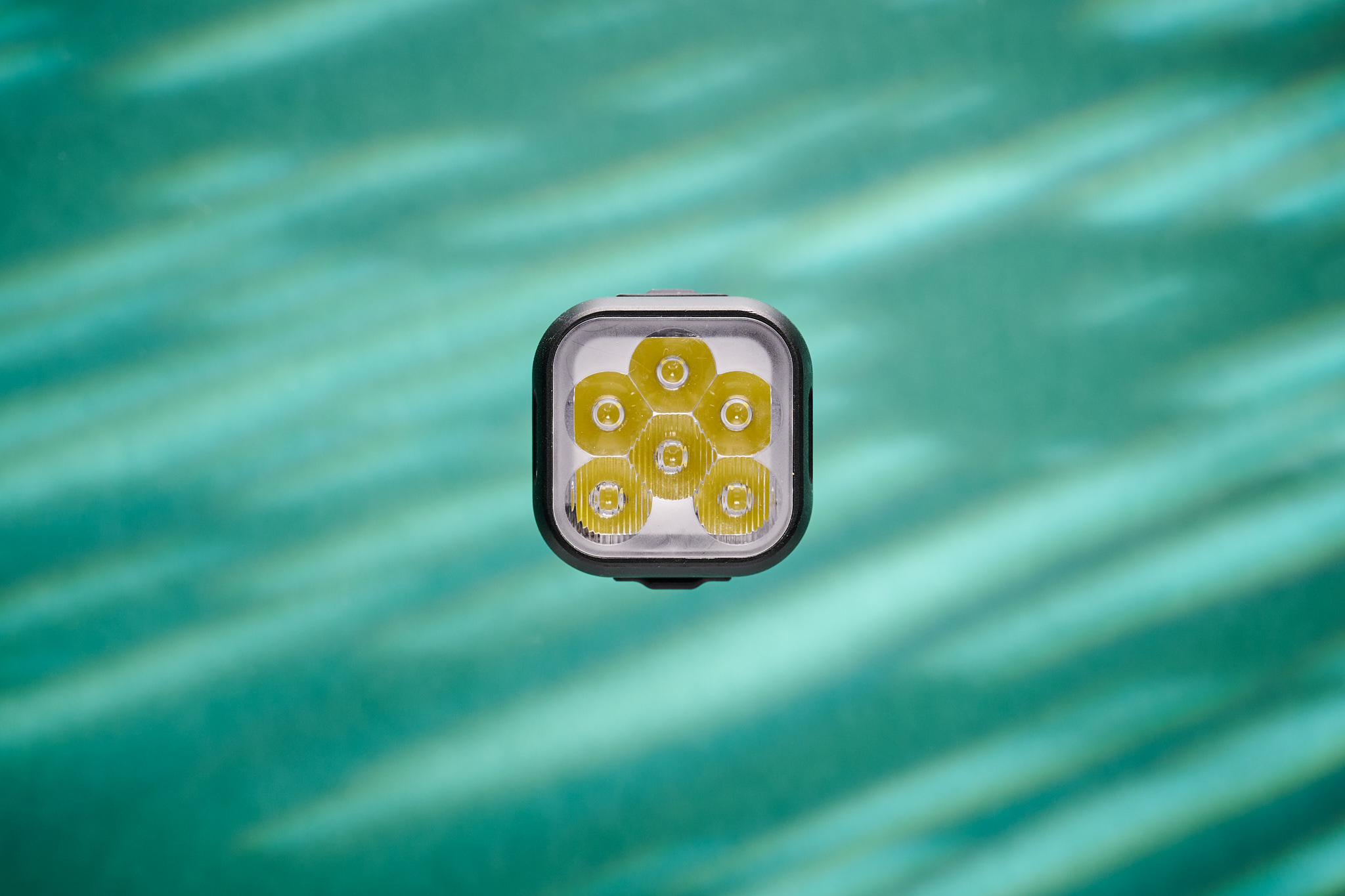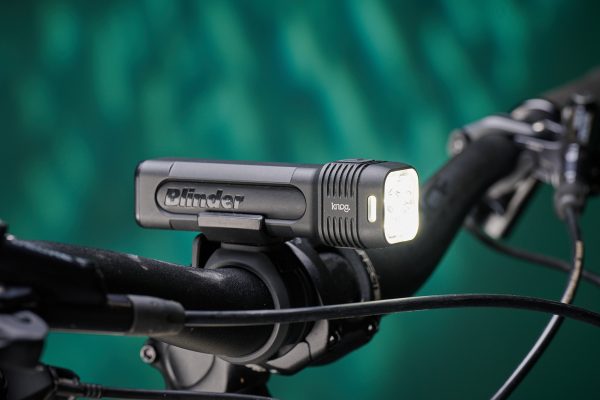The Blinder 1300 is a new compact headlight from the Australian accessory brand that, as the name suggests, puts out 1300 Lumen on full beam. It’s compact and lightweight and can be mounted on the handlebar or a helmet as a second light.
The Knog Blinder 1300 Night Light is a quality helmet light for under £100
Knog’s previous PWR light was modular design with lots of built-in accessories. It was reasonably powerful, but run time wasn’t great and you had to twist it to turn it on, which I felt seemed convoluted. The Blinder 1300 is sort of back to basics with the battery and lamp all contained in a single shell with a conventional on/off switch. It’s touted as a road light, but it’s sleek enough to go up against the best mountain bike helmet lights.

Bike Lights, Mounts, Lens, Lights, Handlebars, Power Packs, Monteer, Kong, Blinder, Exposure, Magicshine
Design and Specifications
There are five other modes pre-programmed into the Blinder 1300 – you get the regular high, medium and low beam as well as a pulse strobe and eco modes. The latter are road-specific, but if you’re limping home on low power, they mean you’re not completely in the dark.
Accessing the modes is done via a push-button on/off switch, but this also doubles as a battery life and charge indicator. A quick press and it displays a colour – green is 100-50% charge remaining, yellow 50-25%, and red is under 25%. During the charge phase it pulses yellow, before turning green when it’s fully juiced.

Bike Lights, Mounts, Lens, Lights, Handlebars, Power Packs, Monteer, Kong, Blinder, Exposure, Magicshine
Run time is dependent on the mode, but at just over 75 minutes on high beam is a little les than average for a light of this size and class. Dropping the power by half doubles the run time, and you get nearly eight hours on low. If you go all the way to Eco mode, you can actually get 120 hours out of a single charge, but that mode is in no way practical off-road as it’s just not bright enough.
Charging is via a USB-C, which is all the rage with the new Apple products, but Knog doesn’t actually include a cable with this light, nor a plug. Most households should have one but if you don’t, it’s an extra cost to factor in.
The Blinder 1300 has a 3.7V lithium-ion battery, which does charge quickly. You’re also not going to run into any major issues if you leave it trickle-charging for longer, or burn a few bars and then top up. The unit is 100% waterproof and has a durable CNC-machined aluminium construction. It also has a square profile, which I quite like because it doesn’t roll away when you put it down. Maybe that’s just me?
Included in the box are two mounts. You can attach the light to a handlebar using the stretchy rubber stra,p but you also get a Go-Pro attachment. Unfortunately, this is only the male part, and the GoPro base is not included. Several manufacturers offer them for helmet and bar use, and some helmet firms, such as Bell, include a plug-in option with their trail helmets, which is what I’ve been using for this test.

Bike Lights, Mounts, Lens, Lights, Handlebars, Power Packs, Monteer, Kong, Blinder, Exposure, Magicshine
Performance
Although the Blinder does put out a good pool of light, it has a pretty yellow tinge compared to some top-end brands, and lacks the clarity for picking out detail. Six mini LEDs are crammed in the lamp unit and, while they create a slightly focused beam pattern, if you’re running a more powerful bar light they can get a bit overwhelmed. Companies get around this overcrowding issue by focusing the beam on helmet-specific lights, so that it can cut through the glare to spot turns and obstacles. Unfortunately, the Blinder 1300 has a slightly broader spread than most, and doesn’t quite cut through.

Knog Blinder 1300
I like that both mounts clip around the body of the light in the same way, and are secured with a little cam lever. The light can still slide backwards and forward, which is handy if you’re running it up top and you catch it on a tree. If you run the GoPro thumb screw slightly loose, you can also pivot the light up or down as you ride. The only downside of the GoPro system is that it’s pretty tall, and the Knog also mounts on the crown of the helmet at the highest point, so the whole set-up reduces branch clearance when riding through the trees. That extra height also creates a greater pendulum effect, so you can definitely feel the weight when looking down or side-to-side.
The worst thing about running this light on the head is it’s impossible to see the battery life indicator, and while you can remove the lamp to take a gander, it means loosening the tiny lever, which is incredibly fiddly. Knog does have a smartphone App, allowing you to check the run time and modify the light output remotely on its PWR lights, but oddly the new Blinder 1300 isn’t supported.
Verdict
The Blinder 1300 is extremely well-made and packs a punch. Ultimately though run-time is king, and with this light you will either have to manage your use or keep for short rides only. Also, if you don’t have them, you’re going to have to invest in a helmet mount, cable and plug, which is not a massive outlay but it does add up.
















